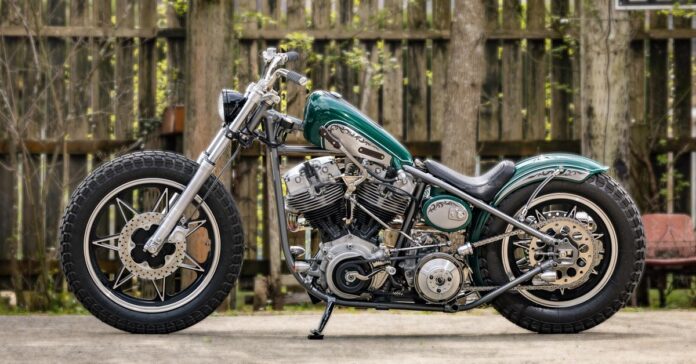The Japanese custom scene has its leading lights; superstar builders with résumés that include coveted show trophies and high-profile OEM collaborations. But there are also highly skilled craftsmen who manage to fly under the radar—like the builder of this captivating Harley Electra Glide bobber, Shintaro Kido.
Kido-san runs his one-man shop, Kid Custom Factory, out of Fukuoka—a port city situated on the northern shore of Kyushu Island. He started his career at a factory that built formula cars in Suzuka, before turning his attention to custom motorcycles. He’s been operating as Kid Custom for 17 years already, but this is the first time his work has crossed our desk.
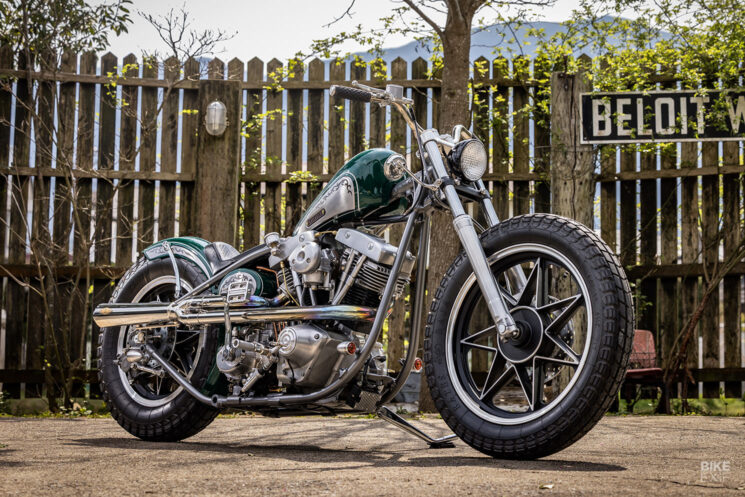
“Shintaro’s machines are by no means flashy,” says photographer Kazuo Matsumoto, who brought us this story. “However, if you look closely at them, you can see the intricate craftsmanship throughout, like beautiful works of art. Of course, he has a high level of knowledge and skill with engines, so these machines are also a lot of fun to ride.”
Shintaro is equally adept at customizing both modern and vintage machines, but this particular project called for a classic touch. The donor bike was a 1979 Harley-Davidson FLH Electra Glide, and the inspiration came directly from the customer. “Shintaro wanted the machine to have a calm, mature vibe—not extreme—because of the owner’s gentlemanly looks,” Kaz explains.
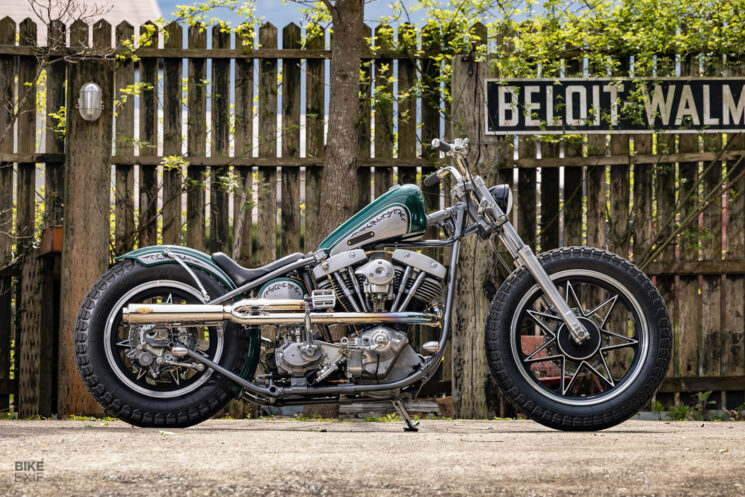
To kick things off, Shintaro stripped the bike down to nothing but its frame and Shovelhead engine. He focused on the chassis first, converting it to a hardtail with a wheelbase that’s almost an inch shorter than stock (a small change that made a big difference to the Harley’s stance). Closer inspection reveals a host of finer details—like the hollowed-out steering neck gusset.
The front forks are period-correct 35 mm Harley-Davidson FX units, but they’ve been modified extensively. Shintaro turned the fork lowers on a lathe to give them a smoother look, while also machining a custom top yoke out of a chunk of aluminum. The idea was to create a vintage European vibe for the front end—as if the bike was running classic Ceriani gear.
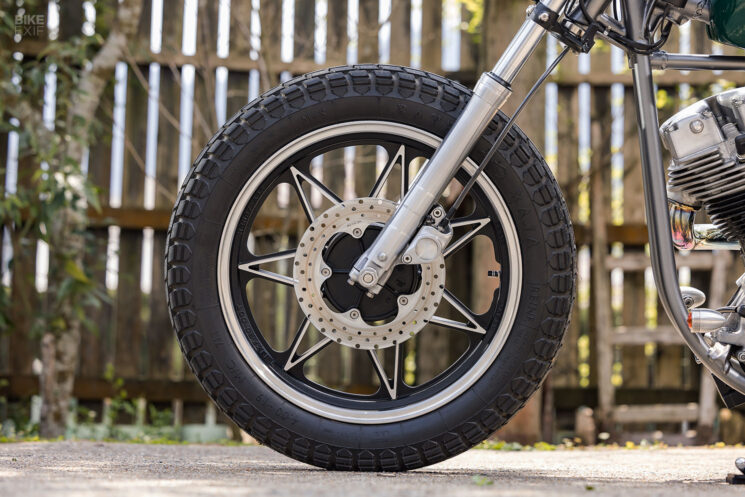
Shintaro also shortened the forks by two inches to complement the abbreviated rear section. The wheels are dead stock aftermarket ‘Seven Star’ items, originally manufactured by Asahi in Japan. They measure 19” at the front and 16” at the back, and are wrapped in Bates Baja tires.
A small, polished Harley-Davidson brake caliper grips a single front disc, with a Girling caliper slowing down the rear wheel.
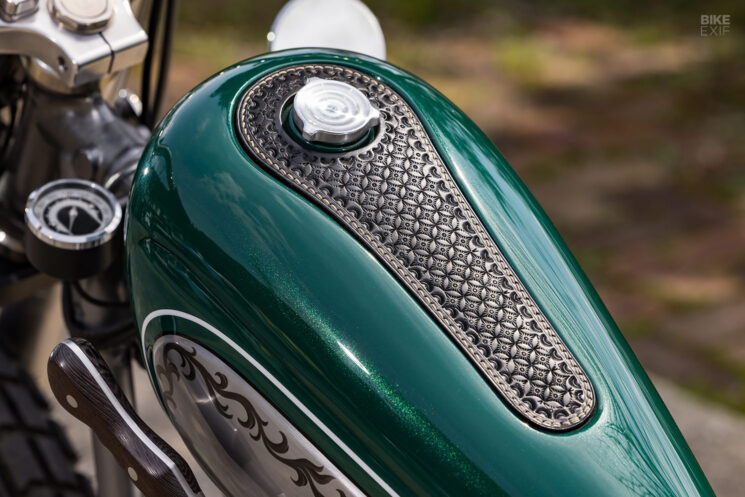
All of the old Shovelhead’s bodywork is bespoke. Shintaro took cues from the iconic Sportster for the fuel tank design, but put his own spin on it. A recessed section at the top accommodates a leather panel, while bulged side sections add a touch of extra style.
The tapered end of the fuel tank has a molded feel, ‘wrapping’ around the frame rail as it meets the seat. Other details include a custom-made fuel cap, and wooden tank badges that bear the Shovelhead’s nickname. “Shintaro wanted the machine to have a refined look that would suit an old English town,” says Kaz, “so he decided to name the machine Chester, after a historic castle town in England.”
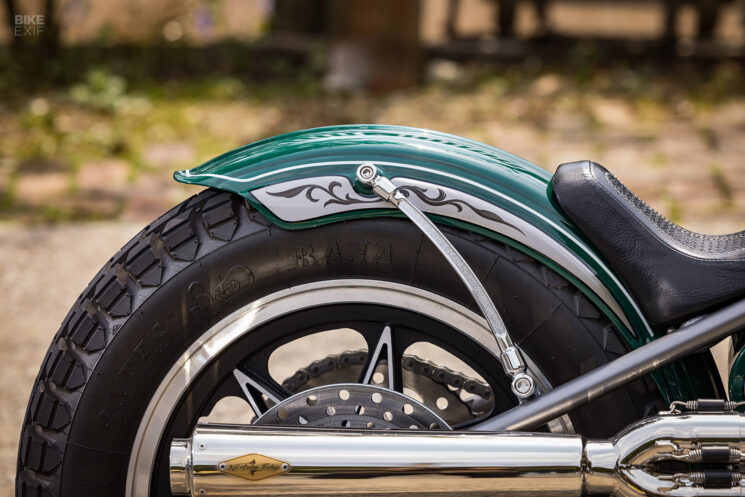
A ribbed fender floats above the rear wheel, with flared sides that match the sides of the fuel tank. It’s held in place by a pair of curved fender stays that testify to Shintaro’s obsessive attention to detail. Each piece is polished, with a recessed center section that sports a rough finish—a feature that’s repeated on the rear caliper mount and the footpeg brackets.
A handmade saddle straddles the space between the fuel tank and the rear fender. Upholstered by Shintaro’s friend and go-to seat guy, Ba Standard Leather, it wears a sophisticated stamped pattern.
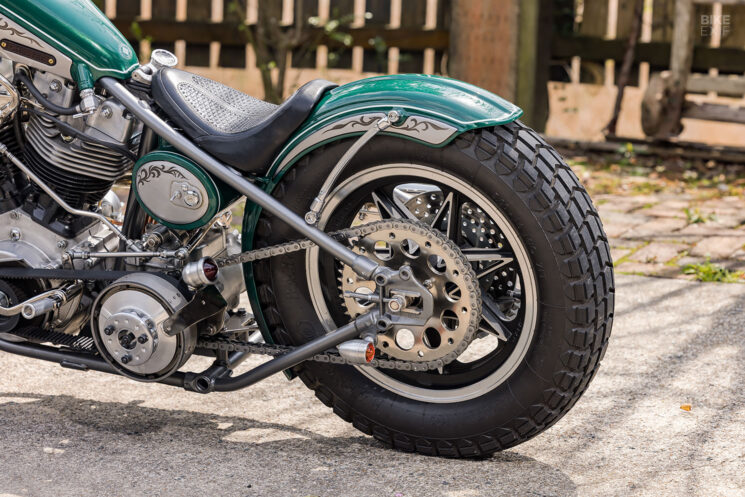
There’s one more piece of bodywork—an oval tank, mounted under the seat. Half of it holds oil, while the other half holds a battery, key wiring components, the ignition barrel, and a couple of switches.
An open belt primary sits just below it, with a low-mounted taillight and license plate holder placed further back. The front turn signals sit low on the frame, with the rear units attached to the rigid rear triangle; both sets are bolted to custom-made tabs.
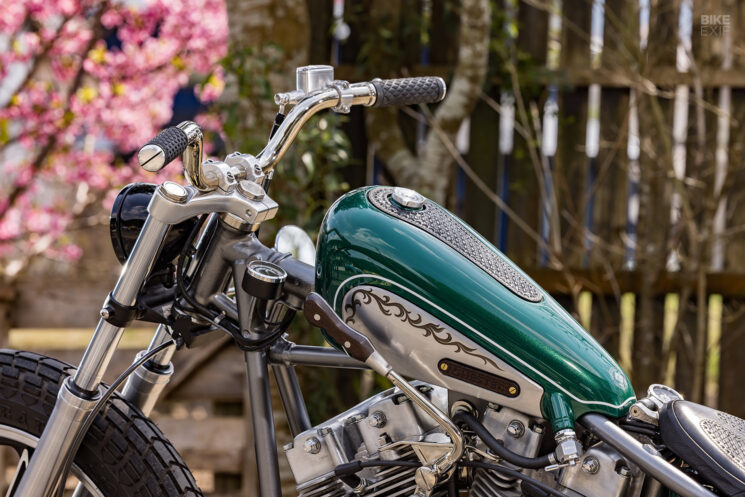
In the cockpit, narrowed handlebars are held in place by custom-made risers that are recessed deeply into the top yoke. They wear Biltwell Inc. grips, handmade bar-ends, integrated switches, an internal throttle, and a Kustom Tech brake lever. A Motogadget Motoscope Tiny speedo sits between the tank and bars, with a tacho mounted further back, just above the engine on the right-hand side.
The footpegs and brackets are handmade parts and include a foot-operated clutch. Gear shifts are done by hand, via a jockey shift that utilizes a custom linkage system. Shintaro wanted the shift lever to look like a traditional wooden knife handle—so he studied knife-making techniques, and used those to craft the piece.
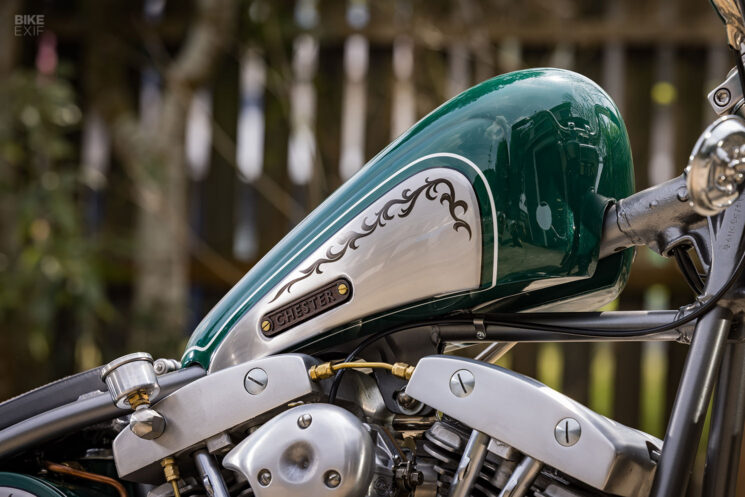
Moving to the paint job, Shintaro called in another regular collaborator—Makoto at FFF. The owner had requested green (as a nod to his business’ branding), so Makoto laid down a lush green metal-flake base, complemented by pin-stripes, brushed aluminum details, and just a hint of filigree.
Finally, Shintaro drew on his experience building race cars to fabricate a high-mounted exhaust system, giving the otherwise elegant Shovelhead a sporty edge. The carburetor is an S&S Cycle part, while the cast air cleaner cover is from Fork Japan.
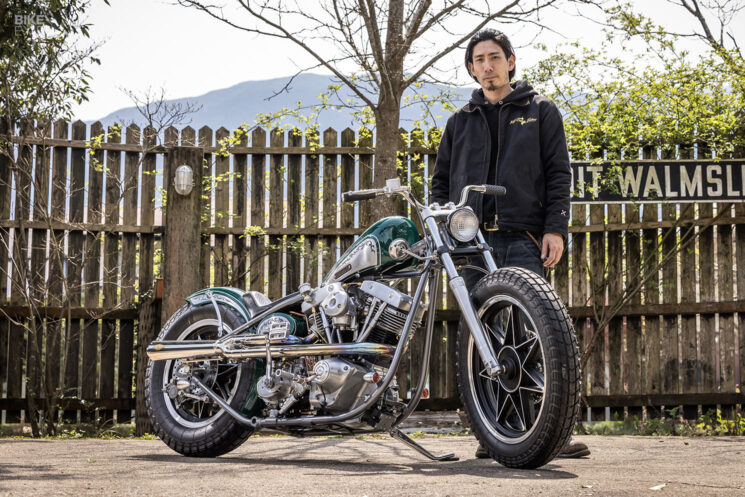
Skilfully blending modern and retro sensibilities, this Harley Electra Glide bobber is the mark of a craftsman at the top of his game. Frankly, we’re a little embarrassed that it took us so long to discover Kid Custom Factory.
Kid Custom Factory | Instagram | Images by, and with our sincerest thanks to, Kazuo Matsumoto

